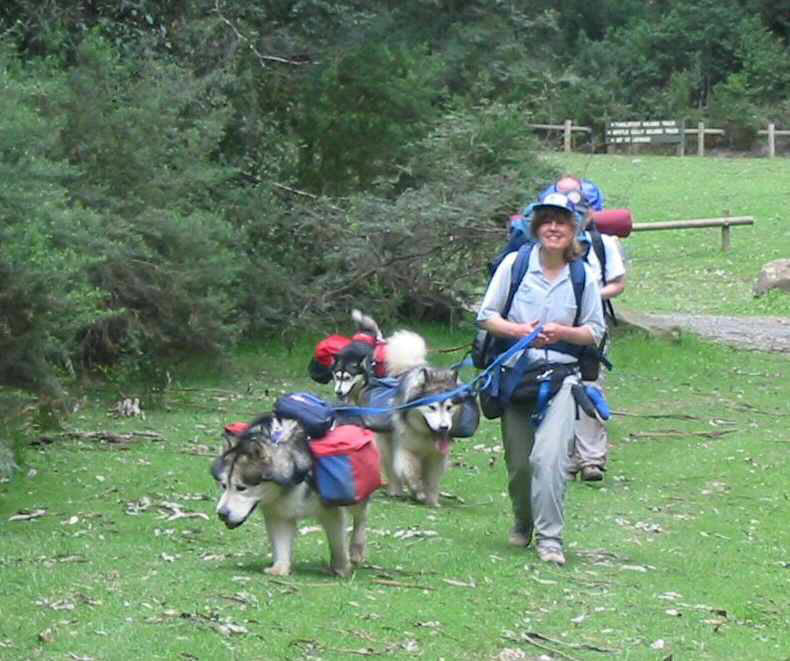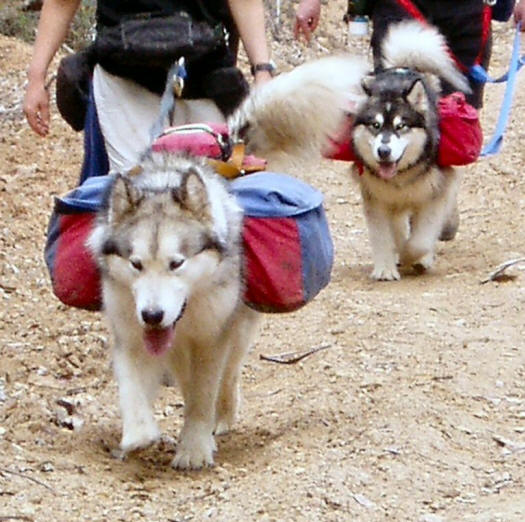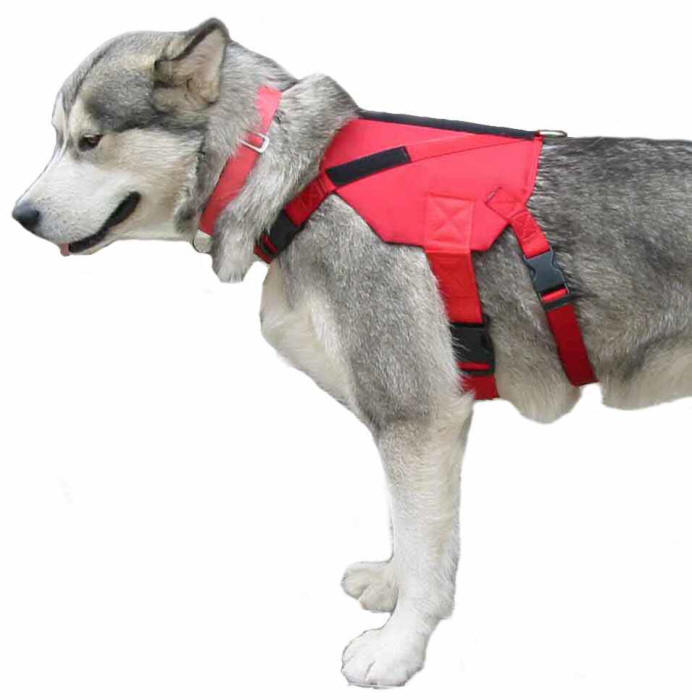 Use & Maintenance of the Windchill Backpack
Use & Maintenance of the Windchill Backpack
On this page:
- Using your backpack
- Fitting the backpack
- Loading your backpack
- Maintenance of your backpack
- Repairing your backpack
Using your Backpack:
 The Windchill
Backpack is designed to carry
heavy loads (but never more than
30% of your dog’s body weight)
on long hikes, or can simply be
used to carry supplies on short
walks or to help bring the
shopping home.
The Windchill
Backpack is designed to carry
heavy loads (but never more than
30% of your dog’s body weight)
on long hikes, or can simply be
used to carry supplies on short
walks or to help bring the
shopping home.
Our backpacks are made from heavy-duty, waterproof materials, with adjustable synthetic webbing straps so that the pack can be fitted to your dog. Your backpack also has separate saddle bags which are attached to the saddle with velcro and a PVC buckle for ease of removal and replacement.
It is important that you select a backpack of a suitable size for your dog. The saddle-bags should not hang so low that they bang around the legs of the dog and interfere with the dogs movement, and the saddle should sit over the shoulders and not extend beyond the upper section of the back.
To put the backpack on your dog, separate the saddle bag section from the saddle. Place the saddle on your dog: the 3 velcro strips and buckle go to the front and the D-ring should be towards the rear of the dog. The chest strap goes to the front around the neck and across your dogs chest – it should sit lower than your dog’s collar. The other 2 straps go down around your dog’s abdomen – the wider strap should sit just behind the front legs.
Once the saddle is in the correct position and the straps are adjusted to fit (see below) you can then place the saddle-bag section onto the saddle.
Adjusting the Straps:
 It is important that you adjust the 3
webbing straps of the backpack
so that it is fitted correctly
and is comfortable for the dog.
It is important that you adjust the 3
webbing straps of the backpack
so that it is fitted correctly
and is comfortable for the dog.
The straps should be adjusted to be very firm on your dog without being too tight. If the straps are too loose the pack will move as the dog is walking and may rub the skin or cause injury if the pack is not in the correct position.
Adjust the chest strap so that the backpack is sitting over the withers (shoulders) of the dog. In this position the weight of the pack is transferred down to the ground through the front legs and feet.
The pack should never sit on the dogs lower back (loin). The lower back is the weakest area of the dog’s spine as there is no support from the rib cage or pelvis, and this area should never bear any weight.
The straps will often need to be tightened once the pannier bags are placed on the saddle, and the straps must be checked at regular intervals when walking to ensure that they are not too tight or loose.
If you are not sure that your dogs pack is fitted correctly, please check with an experienced backpacker. A badly fitted or balanced pack will be uncomfortable for the dog, may rub or even cause injury.
The pack
should be adjusted so that it
remains centred along the
topline of the dog and cannot
slip from side to side. The
saddle-bags should be evenly
weighted so that the pack is not
pulling to one side.
If your dog is to carry a load it is best to load the pack before putting it on the dog, and weigh each side to ensure that the saddle bags are roughly equal in weight.
Place the loaded saddle bags carefully onto the saddle so as not to startle or cause injury to your dog – apply the weight from front to back so the weight is taken by the shoulders first.
If your dog is negotiating obstacles on a walk, such as climbing over a log, assist your dog by taking the weight of the pack. In difficult situations it is advisable to remove the dog’s pack and put it back on after the obstacle has been safely negotiated to prevent injury to the dog.
The pack should only be on the dog while it is walking or resting briefly, and should be removed if the dog is jumping, swimming, negotiating obstacles or having a longer break.
A backpack which is left
dirty will have a reduced
life-span since particles of
grit will wear away at the
stitching and fabric of the
pack.
When the pack is dirty it should be hand-washed in warm (not hot) water using a mild soap, such as Woolmix, and hung to dry away from direct heat. Do not machine wash. Dried mud can be removed with a stiff brush.
The backpack should never be stored damp – unload and dry the backpack before storage. Do not tumble dry or expose to direct heat.
Each time you use the pack, examine the fabric for holes and stitching for signs of wear, and check that the zips and buckles are in good condition. If any part of the pack is worn, it should be repaired before use to prevent the issue from getting worse.
If any part of the pack is worn, it should be repaired before use to prevent the issue from getting worse.
We are happy to do repairs on your backpack should it become necessary or can supply you with the materials should you wish to do your own repairs.
